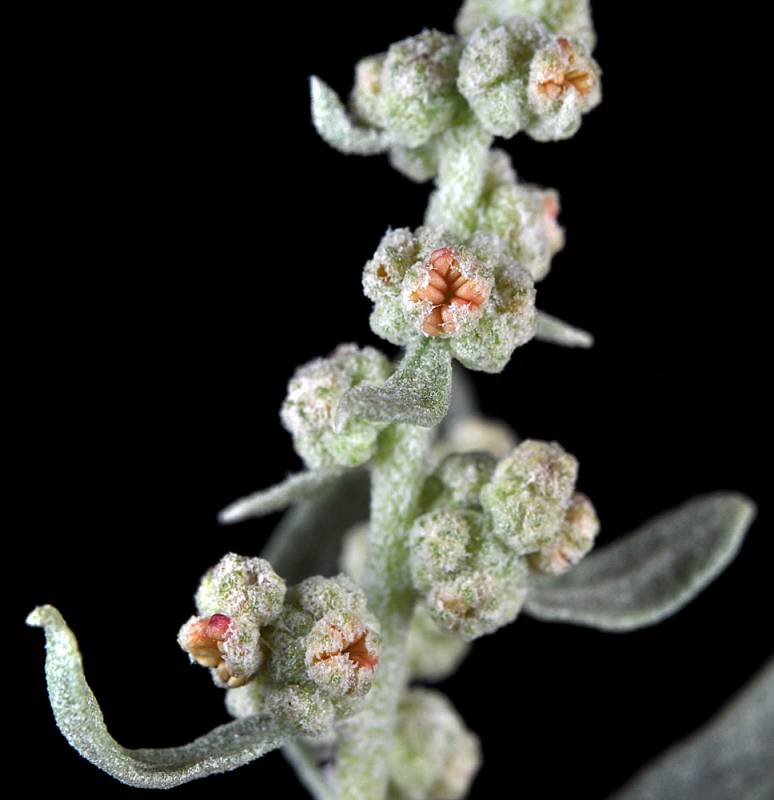Atriplex obovata
Atriplex canescens
fourwing saltbush, hoary saltbush, shadscale, wingscale
Leaves numerous, alternate, from elliptic to linear, sessile, 2-5 cm. long and 2-8 mm. wide, entire, grayish-scurfy.
Staminate flowers tawny, glomerate in numerous spikes that form large, leafy panicles, the perianth cleft to the base into 5 scurfy segments; pistillate flowers few to many in open to congested, leafy to naked spikes and panicles; each flower subtended by 2 bracts, which are completely fused, enclosing the fruit, and enlarging to 5-15 mm.
Utricle enclosed by the fused bracts, which have 4 wings lengthwise, the wings broader and longer than the body of the bract, sharply toothed and strongly net-veined.
Atriplex obovata
Atriplex canescens
- Local floras:
CA,
OR,
WA
- Local Web sites:
CalFlora,
CalPhotos,
Flora NW,
PNW Herbaria
WildflowerSearch
iNaturalist (observations)
USDA Plants Database
- LBJ Wildflower Center
- SEINet
- Plants of the World Online
- Encyclopedia of Life
- Wikipedia
- Google Image Search


